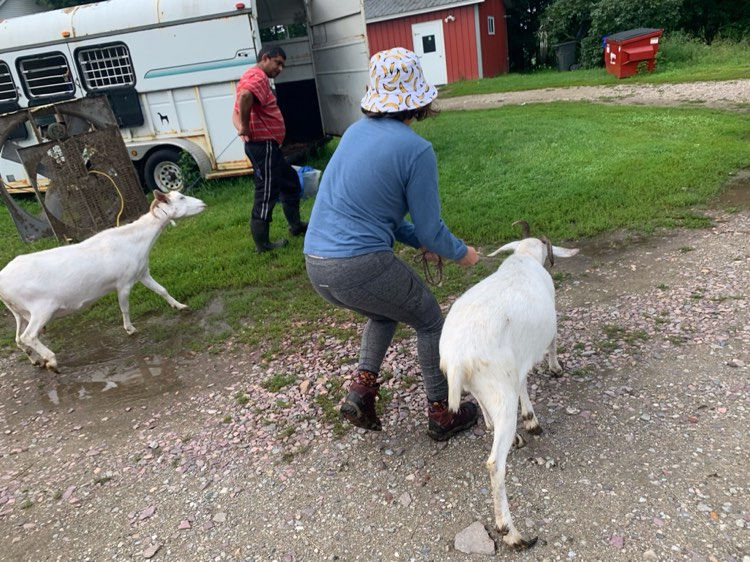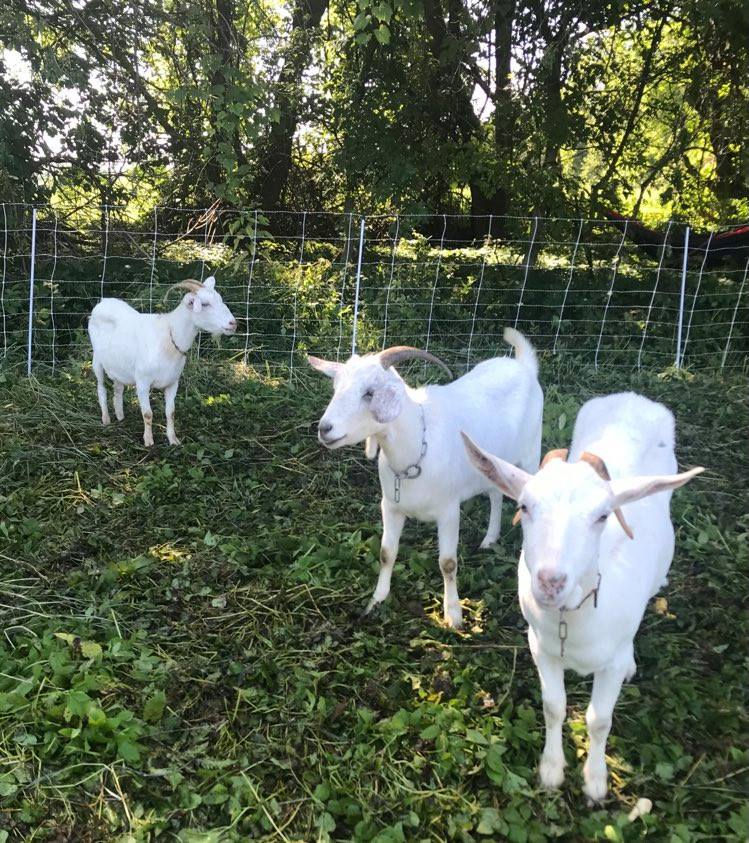Goats Gone Wildways
- noralaymon
- Aug 4, 2021
- 3 min read
Updated: Aug 5, 2021

On Monday we picked up three female goats from Pine Island Community Farm to bring to Mckenzie Park to graze goutweed, which is an invasive plant that you can read about in our other posts. After a few minutes of chasing the goats around the barn, we got them on leashes and dragged them into a trailer. We caressed their trembling bodies and gave them names: Gordon, Ramsey, and Guy. The trailer was suspiciously close to the slaughterhouse. All of the goats at Pine Island seem painfully aware of what goes on in the slaughterhouse, so our three girls were less than cooperative when we approached them with leashes. If you enter the barn empty handed, you are greeted by sniffs, licks and nibbles. If you enter the barn with a leash, everyone runs away in terror. We take comfort in the fact that these goats get to live comfy lives with good food, access to the outdoors, and frequent head rubs. If you're going to consume meat, Pine Island is a good source of ethically raised livestock. The farm is owned by the Vermont Land Trust and is run by two New American families who came to Vermont as refugees. Pine Island is a place where people can come and pick out their own goat to be slaughtered and butchered. Most of the customers are immigrants who are used to having access to local meat farms. Farm-to-table goat meat is not easily accessible in America, but Pine Island is a resource for people to practice their traditional food customs.

I started volunteering at Pine Island about a year ago. I spend most of my Saturdays either helping Chuda and Gita Dhaurali with their goats or Theogene and Hyacinthe Mahoro with their chickens. I simply wanted an opportunity to participate in animal care/management, which is one of my main passions. There was no way to predict that my work at Pine Island would help me with a future invasive species management project. After ten months of volunteering at the farm, I was hired for the internship with Burlington Wildways. One day while Marjorie, Libby, and I were brainstorming goutweed removal ideas, Duncan Murdoch, the Stewardship Coordinator at the Intervale, mentioned that he always wanted to bring in a herd of goats to graze invasive species. We giggled it off as a nice but unrealistic idea; we then realized that Duncan was not kidding. "Well, we do know a goat farmer," he said. Wait, so do I, I realized. And then we figured out that we were both talking about the same guy. A few days later, Libby and I drove to the farm and asked Chuda if we could borrow some goats. "How many? Thirty goats?" he asked. "How about three?" I replied. Libby and I were just about ready to buckle up some goats into the back seat of my Honda Civic but Patrick Dunseith, the Land Manager at the Intervale, brought up some good points.
Where are you going to put the goats?
How are you going to transport the goats?
Do you know how to take care of goats?
How are you going to get the correct fencing system?
What is your research question(s) and what are your research methods?
You can find our management plan in the document that's attached to this post, but essentially we decided to do a 7 day trial in a patch of goutweed at Mckenzie Park. Luckily the land manager for McKenzie Park is also our boss and the land steward for Burlington Parks, Recreation & Waterfront. Dan Cahill helped us get the materials we needed and provided some of his staff to help us with transportation and setup. We set up our ungulate ladies in a ~15x35 square foot electric fence that encompasses goutweed, burdock, bindweed, and grass. It took them a few days, but they are finally starting to eat the goutweed. We have no idea if they will eat all of it by the end of the trial.Right now, the important thing is that our girls are healthy and starting to adapt to their new environment. Expect a "Part 2" next week! Ciao for now.
xoxo,
The Goat Shepherdesses






Comments